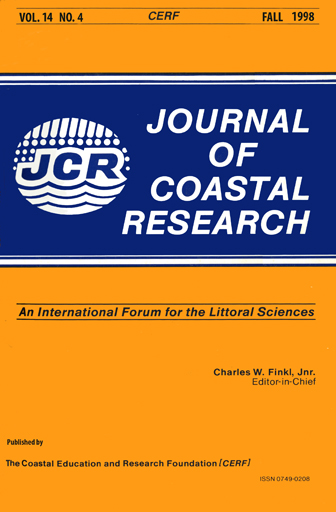C/S Ratios in Estuarine Sediments of the Odiel River-mouth, S.W. Spain
Keywords:
Estuarine iron-sulfides, Sulfur availability, C/S ratios, Exposure /submersionAbstract
Iron-sulfide formation in estuarine environments is controlled by sulfur availability, which is distinct in each subenvironment. Along the mesotidal, mixed-energy Huelva coast, s.w. Spain, appreciable quantites of iron sulfide appear in all the estuarine sediments. Formation of iron sulfides in the Odiel River estuary is produced under different crystallization habits in the various subenvironments. There are: (1) octahedral bipyramidal crystals, (2) concentrated crystals in the tests of foraminifers, and (3) framboidal aggregates. Sediments display higher organic carbon/sulfur ratios in the subtidal channel subenvironment than in the intertidal channel-margin sectors. This is because the channel is always submerged under water, thereby producing the sulfur available for bacterial activity. In contrast, the channel-margin sectors are only periodically submerged. Sediments of the salt marsh sectors show C/S ratio values near to those observed in fresh-water environments, since the organic carbon content is highest with only minor sulfur content because the flood water enters it only periodically. The sterile marsh sectors show a higher C/S ratio than those from the marine environments because they are reached only by astronomic tides, occurring every 60 or 183 days. The water introduced there remains for a sufficient time to allow for the sulfur to be completely consumed. All these differences found in each estuarine subenvironment are clearly recorded in the direct correlations with distinct slopes corresponding to different C/S ratios.


